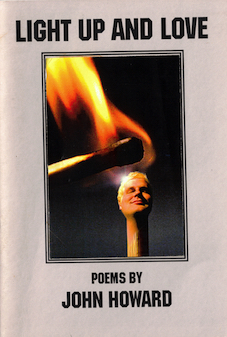
What Is Metamodern? – launched in 2013 – is a catalog of cultural products and artifacts that in some way bear an aesthetic signature that exemplifies metamodernism. We’ve culled these exemplars from film, television, music, literature, social trends, architecture, religion, politics, advertising, language and more. The editors, Greg Dember and Linda Ceriello, see metamodernism as a very broadly located aesthetic sensibility that emerged organically around the turn of the millennium. In our view, metamodern cultural products engage the conflicts between modernist conviction and postmodern relativism, in part by embodying an aesthetic that braids the sensibilities of modernism and postmodernism with an emphasis on felt experience. Read more below, or go directly to individual posts…
NEWS (9-18-24): Greg Dember, co-editor of What is Metamodern?, has a book out! Say Hello to Metamodernism! (Understanding Today’s Culture of Ironesty, Felt Experience, and Empathic Reflexivity). For more information and/or to purchase the book, visit its page on Amazon. (Outside of the U.S., go to your country’s Amazon site, and search for “Greg Dember”.)
Recent Posts

In 2024, a question on a lot of people’s minds was “What is ‘brat’??” If you were tuned in to popular culture even a little last year, you were aware that recording artist Charli xcx made a big splash, not just with her album entitled brat, but with the wide reaching meme/concept of ‘brat.’ As someone who works in marketing continue>>>

Metamodernism and Autofiction: A Discussion With Novelist Tope Folarin
We discuss Nigerian-American author Tope Folarin’s novel, A Particular Kind of Black Man in light of his interest in metamodernism, and more! Watch video>>>

Peanut Butter Story – a Metamodern poem by John Howard
I read his poem “Peanut Butter Story” … Linda … voiced something I’d also been secretly thinking: It’s got that metamodern j’ ne sais quoi! continue>>>
More Posts
About This Website (and about metamodernism)
The central motivation of metamodernism is to protect interior, subjective felt experience from the ironic distance of postmodernism, the scientific reductionism of modernism, and the pre-personal inertia of tradition.
Greg Dember, 2018
Metamodernism . . . allows for individuals to (re)claim ownership of a breadth of human vicissitudes experientially felt to be real, and more so when they stand messily entangled rather than tidily sorted out.
Linda C. Ceriello, 2013
Metamodernism . . . oscillates between a modern enthusiasm and a postmodern irony, between hope and melancholy, between naïveté and knowingness, empathy and apathy, unity and plurality, totality and fragmentation, purity and ambiguity. Indeed, by oscillating to and fro or back and forth, the metamodern negotiates between the modern and the postmodern.
Timotheus Vermeulen and Robin van den Akker, 2010
The editors of WiM first began puzzling over this cultural shift in the early-2000s. From our perch in Seattle, we could sense that something different was happening in the music and films and literature we encountered. We were also noticing subtle shifts in certain uses of vernacular and humor on the streets and in our local haunts and coffee shops – It all seemed interrelated.
We weren’t sure what to call it, but we were pretty sure we couldn’t be the only ones tuning in to this stuff. Clicking around the Internet, it wasn’t hard to hit upon other attempts to explore and to name it – attempts to creatively bypass the problematic default moniker, “post-postmodernism.” With the discovery of Notes on Metamodernism, a scholarly web journal started in 2009 by cultural theorists Timotheus Vermeulen and Robin van den Akker, we found a lively community of inquirers who also seem to be considering this a bona fide cultural turn. And as well, they offered up a term we could get on board with. So, then, metamodernism it is.
We created this website in 2013 as something a bit different – a catalogue, of sorts, of cultural products that seem to bear the metamodern signature, something accessible to the popular readership and, we hope, providing jumping off points to add to the academic conversation-in-progress.

Right. So, what, according to us, is the basis for this term, “metamodernism“?
Let’s start with a very quick and dirty little historical breakdown of the time periods or cultural sensibilities – what we refer to as “epistemes” – prior to the metamodern. (“Episteme” is the term used by Foucault as a conceptual frame for delineating historical time periods as well as for talking about what characterizes them, aesthetically and epistemologically.)
There was tradition. That was the thousands of years of human culture that revered knowledge that had been passed down from rituals, authoritative figures, and the like, from the past. No questions asked, basically. (Remember, we said quick and dirty!)
Then there was modernism. Some locate this period as far back as the Enlightenment/Industrial Revolution*, though in many cultural domains it asserted itself around the turn of the Twentieth Century. Modernism is about putting hope in reason, science, and notions of progress and invention; modernists considered themselves to be seeing past the veils of traditional culture into an uncovered, objective truth. Then there was postmodernism, which, some time after World-War II, was a revolt against the excesses of technology and what increasingly began to be seen as a childish faith in reason. This sensibility brought needed attention to things like context, unexamined influence and the ambiguous nature of boundaries. As it turns out, postmodernism does that paradoxical move of creating an ideology, of sorts, out of the the futility of ideologies; it is suspicious of attempts to identify a single, grand unifying narrative to explain, well, anything important. Postmodernism killed off the subject. That is, deconstructed the idea that there’s any ‘there’ there – anything of independent meaning – and also that there is anything stable about the person, or subject, doing the interpreting. Postmodernism also made it embarrassing to express any earnest sense of an uncomplicated truth, or to openly identify with sentimentality.
In more recent history – and this is what we founded this website to explore and elucidate – this rejection of the personal has become rather intolerable. The generation born into postmodern disaffection/irony and now ready to move on from that seems to scream, as Linda has written elsewhere, “OK, there may be no ‘there’ there, but yet…I’m here!” This is where one might locate the ground of the epistemic turn to metamodernism, which, as we see it, seeks to resolve and/or engage the conflicts between tradition, modernism and postmodernism by emphasizing felt experience.
Some of the methods we’ve observed in the employ of metamodern creators include: oscillation between modernist and postmodern polarities (as discussed by Timotheus Vermeulen and Robin van den Akker), the outer frame / inner frame narrative structure (in which an outer layer of fantasy surrounds an inner layer of believable emotional truth, as discussed by Raoul Eshelman in his theory of Performatism), constructive pastiche (as distinct from postmodernism’s destructive pastiche), and other tropes that we explore in individual posts such as life-as-movie, the epic (maximalism), the tiny (minimalism), and perhaps most important: irony-embracing-earnestness / earnestness-embracing-irony, or, for short, ironesty.
Evidence of this new cultural and aesthetic turn is all around us – in music, film, literature, design, language, philosophy, religion and more. Ultimately, we’re about exploring and questioning whether these ideas and observations hold up under scrutiny, and what the implications of this new turn may be. So we welcome the input of anyone who has noticed that there’s life after postmodernism.
* The term “modernity” (as distinct from “modernism”), let’s remind ourselves, is frequently used to refer to the larger historical arc that begins with The Enlightenment, with “modernism” referring more specifically to the intellectual movements of the late nineteenth and first half of the twentieth century.
Other Resources
- Bibliography
Rutgers University librarian Katie Elson Anderson has curated a super-useful bibliography of academic and academic-adjacent books, book chapters, and articles that explore the concept of metamodernism. - Notes on Metamodernism
Founded by Tim Vermeulen, Robin van den Akker and Alison Gibbons in 2009, this website is a repository of a great set of research articles. - Music Playlists
What Is Metamodern? editor Greg Dember put these together:
– Metamodern Indie Rock 1995-2005 (Spotify App) (Spotify Web)
– Metamodern Post-Genre 2006-present (Spotify App) (Spotify Web)
– Proto-Metamodern Pre-1995 (Spotify App) (Spotify Web) - Metamodern / Post-Postmodern Film and Television List
This is a great and monumentally long IMDB list created by @mjallard93. We do scratch our heads at a few of the 95 picks, especially among the older films included, but overall: Two thumbs up!
External MM-Related Articles by WiM Editors
- Metamodernism, Russell Brand and Spiritual-but-not-Religious Soteriology (Linda Ceriello)
- What is Metamodernism and Why Does It Matter? (Greg Dember) This article contrasts academic/cultural metamodernism (what we’re talking about on this site) with “sensemaking” or Integral metamodernism (a different construal of the term).
- Punk Rock for Sissies: The Return of Affect in Early 21st Century Indie Rock (Greg Dember)
- The Right to a Narrative: Metamodernism, Paranormal Horror, and Agency in The Cabin in the Woods (Linda Ceriello & Greg Dember) From the edited volume, The Paranormal and Popular Culture: A Postmodern Religious Landscape (2019)
- The Big Bad and the Big “Aha!”: Metamodern Monsters as Transformational Figures of Instability (Linda Ceriello) From the edited volume, Holy Monsters, Sacred Grotesques: Monstrosity and Religion in Europe and the U.S. (2018)
- Toward a Metamodern Reading of Spiritual but Not Religious Mysticisms (Linda Ceriello) From the edited volume Being Spiritual but Not Religious: Past, Present, Future(s) (2018)
Newsletter
To receive a free monthly email-based newsletter informing you of new posts and also including newsletter-only content, subscribe here.



